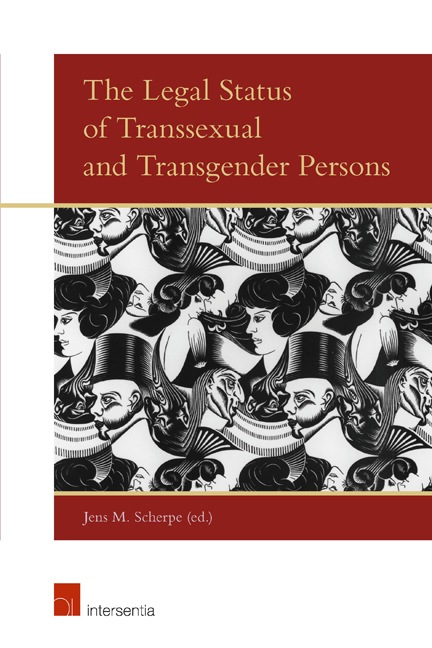Book contents
- Frontmatter
- Dedication
- Preface
- Contents
- List of Contributors
- Introduction
- PART I MEDICAL/PSYCHOLOGICAL VIEWS
- PART II CHRISTIAN VIEWS
- PART III LEGAL VIEWS
- Europe
- Belgium and the Netherlands
- Czech Republic
- Denmark
- England and Wales
- Germany
- Ireland
- Italy
- Spain
- Sweden
- Turkey
- Asia
- Australia and New Zealand
- North and South America
- PART IV CONCLUSION
Belgium and the Netherlands
from Europe
Published online by Cambridge University Press: 28 November 2017
- Frontmatter
- Dedication
- Preface
- Contents
- List of Contributors
- Introduction
- PART I MEDICAL/PSYCHOLOGICAL VIEWS
- PART II CHRISTIAN VIEWS
- PART III LEGAL VIEWS
- Europe
- Belgium and the Netherlands
- Czech Republic
- Denmark
- England and Wales
- Germany
- Ireland
- Italy
- Spain
- Sweden
- Turkey
- Asia
- Australia and New Zealand
- North and South America
- PART IV CONCLUSION
Summary
INTRODUCTION
In Belgium and in the Netherlands the terms ‘transgender’ or ‘transsexual’ are used in different ways. In a strict sense the term is used for a person who cannot identify him or herself with one of the two sexes and who considers him or herself as belonging to both sexes or as between both sexes. In a broader sense, the term covers all persons having problems with the dichotomy male/female and includes not only intersex-affected persons but also transsexuals and cross-dressers. This paper focuses on transgender persons in a broad sense: persons identifying themselves with the gender opposite to the one assigned in their birth certificate. For the purposes of this chapter, transgender includes individuals who have already submitted to medical intervention, such as gender confirmation surgery.
Belgian and Dutch legislation do not use the term ‘transgender’ or ‘transsexual’ as such but describe transgender individuals as persons having the constant and irreversible conviction of belonging to the gender other than the one stated on their birth certificate. In practice, the terms ‘transgender’, ‘transperson’, ‘transwoman’ (for male-to-female transgender persons) and ‘transman’ (for female-to-male transgender persons) are increasingly used in the place of ‘transsexual’, especially in the Netherlands. Therefore, the term ‘transgender’ will be used instead of ‘transsexual’ in this overview.
LEGAL FRAMEWORK AND STATISTICS
STATUTE
Belgian Law
Until 2007 Belgian law did not provide a legal framework for the legal recognition of an individual's preferred gender. This did not mean, however, that gender identity recognition was excluded from Belgian law. As far back as the 1960s, a Brussels court had acquitted a medical doctor who performed gender confirmation surgery. From then on, gender therapy, including surgery, was considered as normal medical therapy. It cannot be deduced from this judgment that transgender persons have an absolute right to recognition of their preferred gender. The final decision lies with the medical doctor who has to decide what medical treatment is appropriate.3 The right to the legal recognition of preferred gender is nowadays seen as an application of the principle of personal autonomy protected by the right to respect for private life as guaranteed under Art. 8 of the European Convention on Human Rights (ECHR).
- Type
- Chapter
- Information
- The Legal Status of Transsexual and Transgender Persons , pp. 109 - 124Publisher: IntersentiaPrint publication year: 2015

